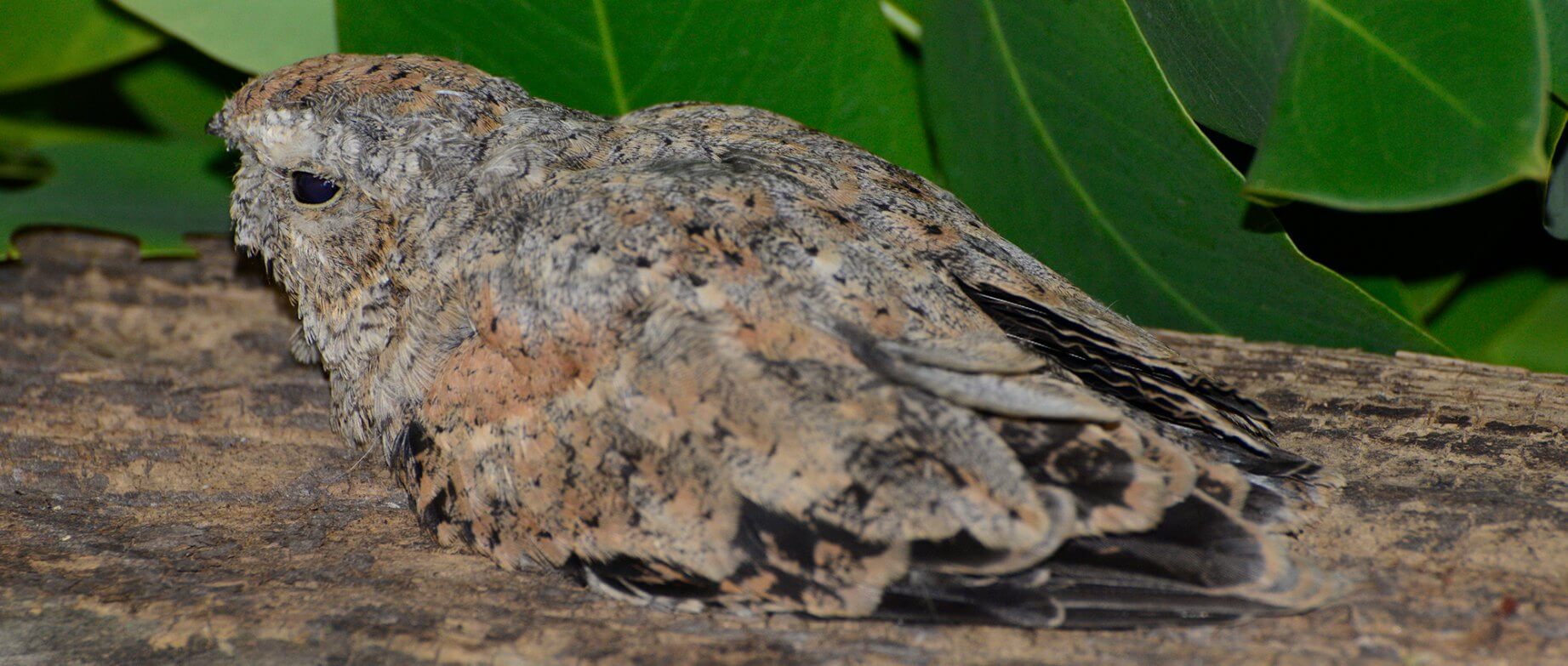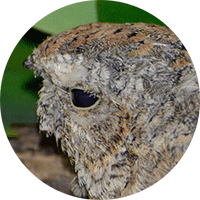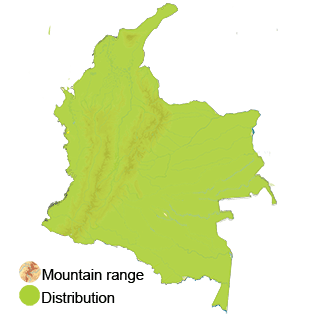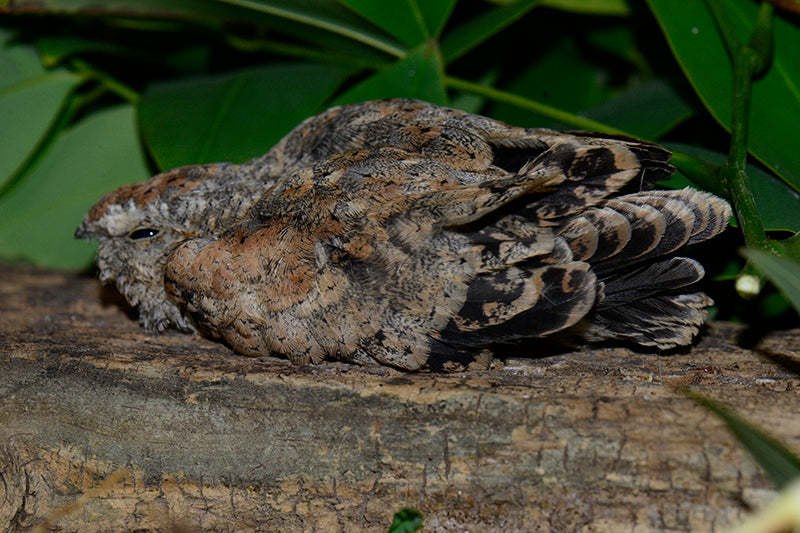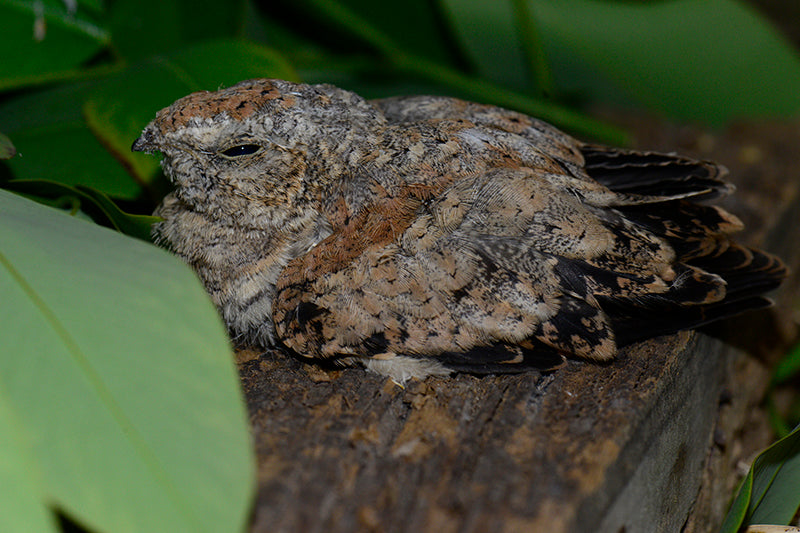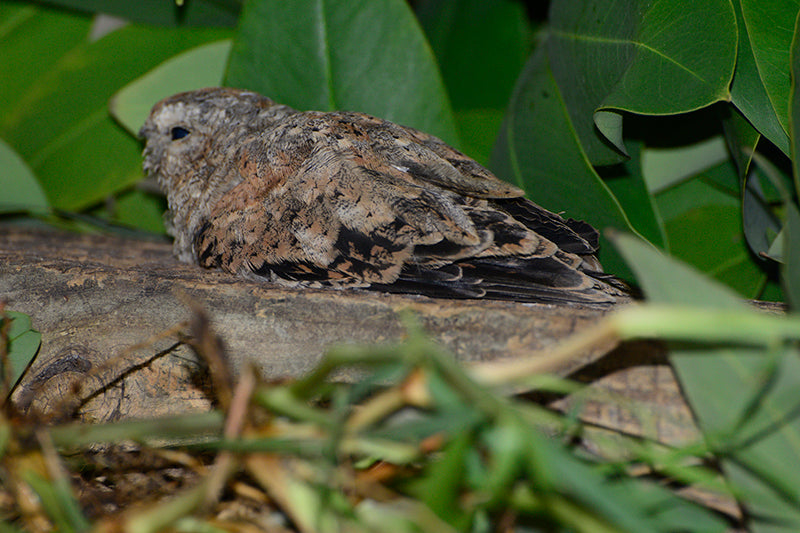Common Nighthawk
The Common Nighthawk (Chordeiles minor) Read in Spanish
Appearance: The Common Nighthawk is a medium-sized bird with a length of about 22-24 cm and a wingspan of around 55 cm. It has cryptic plumage characterized by mottled gray, black, and brown patterns that provide excellent camouflage during the day. The bird exhibits long, pointed wings, a short bill surrounded by a wide mouth, and a white throat patch that is more prominent in males.
Habitat: Common Nighthawks are adaptable and can be found across a range of habitats, including open woodlands, grasslands, savannas, urban areas, and even deserts. They are commonly seen in a variety of lowland habitats, including forest edges, riverbanks, and clearings.
Behavior: Common Nighthawks are crepuscular and nocturnal, being most active during dawn and dusk when they feed on flying insects. They have a distinctive flight pattern characterized by erratic and buoyant aerial displays as they hunt for prey, aided by their excellent maneuverability.
Breeding: Common Nighthawks engage in courtship displays involving aerial dives, wing clapping, and vocalizations to attract mates. They typically lay two eggs directly on the ground or on gravelly substrates, relying on their camouflage to protect their nests.
Conservation Status: The conservation status of the Common Nighthawk is relatively secure. It is not considered globally threatened or endangered.
Distribution
The Common Nighthawk (Chordeiles minor)
Andean Region: In Colombia, the Common Nighthawk can be found in the Andean region, which includes the mountainous areas of the Andes mountain range. This region offers a mix of habitats, including montane forests, páramo grasslands, and agricultural lands, where the nighthawk can find suitable foraging and nesting sites.
Amazon Basin: The Amazon Basin in Colombia provides an extensive area of tropical rainforest that serves as a crucial habitat for numerous bird species, including the Common Nighthawk. Within this region, the nighthawk can be found in riverine forests, oxbow lakes, and other diverse ecosystems that support rich insect populations for their feeding needs.
Orinoco Region: The Orinoco region in Colombia comprises savannas, gallery forests, and wetlands that offer habitat diversity for the Common Nighthawk. Nighthawks in this region can be observed hunting for insects over grasslands, rivers, and open areas during their nocturnal forays.
Pacific Coast: Along the Pacific coast of Colombia, the Common Nighthawk can be found in coastal forests, mangroves, and estuaries.The coastal areas provide a unique habitat for nighthawks where they can feed on insects attracted to coastal environments and roost during the day.
Caribbean Coast: The Common Nighthawk can also be spotted along the Caribbean coast of Colombia, where it inhabits a range of habitats such as dry forests, wetlands, and agricultural areas. The coastal plains and mangrove ecosystems provide additional foraging opportunities for the nighthawk in this region.
Taxonomy
The Common Nighthawk (Chordeiles minor)
- Kingdom: Animalia
- Phylum: Chordata
- Class: Aves (Birds)
- Order: Caprimulgiformes
- Family: Caprimulgidae
- Genus: Chordeiles minor
- Species: Chordeiles minor
Vocalization
The Common Nighthawk (Chordeiles minor)
- "Peent" Call: The most characteristic vocalization of the Common Nighthawk is its nasal and repetitive "peent" call. This call is often heard during the bird's evening flights as it circles overhead, emitting the call at regular intervals.
- Booming Display: During courtship displays, male Common Nighthawks may perform a distinctive booming display. This display involves the bird diving steeply towards the ground, creating a loud, booming sound as it pulls up at the last moment.
- Churring Call: In addition to the "peent" call, Common Nighthawks may also produce a soft, churring call. This call is often described as a series of rapid, soft notes and is typically heard during courtship or interactions between individuals.
- Flight Whistle: While in flight, Common Nighthawks may produce a distinctive whistling sound caused by the air rushing through their primaries. This sound is more commonly associated with their aerial feeding flights as they swoop and glide to catch flying insects.
- Dusk and Dawn Choruses: Common Nighthawks are known to engage in vocal choruses during the dusk and dawn hours, especially during the breeding season. These choruses can include a mix of "peent" calls, churring sounds, and other vocalizations as the birds communicate in their communal roosting areas.

